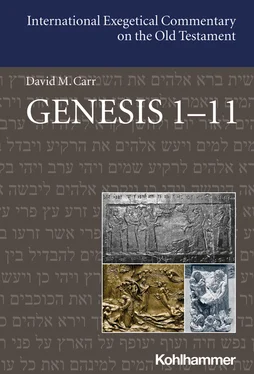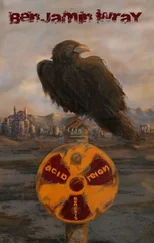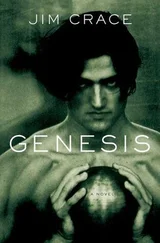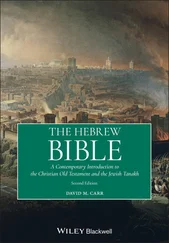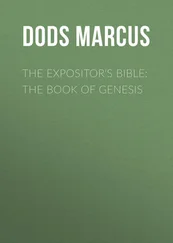David M. Carr - Genesis 1-11
Здесь есть возможность читать онлайн «David M. Carr - Genesis 1-11» — ознакомительный отрывок электронной книги совершенно бесплатно, а после прочтения отрывка купить полную версию. В некоторых случаях можно слушать аудио, скачать через торрент в формате fb2 и присутствует краткое содержание. Жанр: unrecognised, на английском языке. Описание произведения, (предисловие) а так же отзывы посетителей доступны на портале библиотеки ЛибКат.
- Название:Genesis 1-11
- Автор:
- Жанр:
- Год:неизвестен
- ISBN:нет данных
- Рейтинг книги:4 / 5. Голосов: 1
-
Избранное:Добавить в избранное
- Отзывы:
-
Ваша оценка:
- 80
- 1
- 2
- 3
- 4
- 5
Genesis 1-11: краткое содержание, описание и аннотация
Предлагаем к чтению аннотацию, описание, краткое содержание или предисловие (зависит от того, что написал сам автор книги «Genesis 1-11»). Если вы не нашли необходимую информацию о книге — напишите в комментариях, мы постараемся отыскать её.
Genesis 1-11 — читать онлайн ознакомительный отрывок
Ниже представлен текст книги, разбитый по страницам. Система сохранения места последней прочитанной страницы, позволяет с удобством читать онлайн бесплатно книгу «Genesis 1-11», без необходимости каждый раз заново искать на чём Вы остановились. Поставьте закладку, и сможете в любой момент перейти на страницу, на которой закончили чтение.
Интервал:
Закладка:
The following close reading of Gen 1:1–2:3 could provide some additional grounds for taking this theory seriously. For example, towards the conclusion we will see how the text preserves competing structural frameworks, one that connects to the broader Sabbath theme of the present chapter (a balance of 3+3 days) and one that does not. Nevertheless, some ongoing problems with the theory of a secondary Sabbath redaction of Gen 1 render this theory too speculative to form the basis for synchronic commentary. 35As we will see, the present form of the description of creation of heavenly bodies in Gen 1:14–18 seems shaped to account for how day and night might be distinguished in the wake of the intervening creation of the heavenly plate (Gen 1:6–8). In addition, a good argument can be made that the motif of God’s Sabbath rest in Gen 2:2–3 is the Gen 1 counterpart to the rest of the gods featured at multiple points in the Enuma Elish epic. 36
Theories of Word and Act Sources or Strata in Gen 1
It should be emphasized that there are fewer indicators in Gen 1 to point to the reconstruction of “word” and “act” sources of the kind posited initially by Schwally in a 1904 lecture in Giessen (published in 1906) and then published by his former professor in Giessen, Stade, in 1905, 37and there are even more serious problems with the more recent modification of this theory into “word” or “act” compositional layers. 38These approaches are first of all founded on a fundamental misunderstanding of the nature of the above-discussed correspondence formula as an independent statement, an understanding initially refuted in responses from Jacob and Humbert. 39Second, they over-read and misunderstand slight differences in formulation between the divine creation speeches and creation events, differences that the text itself bridges with regular correspondence formulae and statements of divine approval. Third, as Steck points out, more recent redactional approaches differentiating a later “act” or (more often) “word” layer fail to capitalize on the argument of doubling between act and word reports that was so crucial to Stade and Schwally’s initial proposals of parallel sources, and they fail to explain why an “act” or “word” redactor would have so carefully preserved an earlier source whose perspective they felt so compelled to correct. 40
Synchronic Analysis
Gen 1:1–2If the above treatment of translation of Gen 1:1–2 is correct, Gen 1:1 is a temporal expression that places the following description of primeval waters, darkness and wind (1:2) at “the beginning of when God created heaven and earth.” The absolute use of the divine designation אלהים (“God”)—without any definite (“the”) or possessive (“my,” “your”) article—stands here as an implicit monotheistic claim. To be sure, analogous terms were often used in the surrounding context of Israel to refer more generally to a “god,” without specifying a particular deity’s name. 41In this case, however, the reference to אלהים in Gen 1 is part of a broader narrative where the “god” referred to here will turn out to be a quite specific god, Yhwh, the God of Israel (see Exod 6:2–3). The verb ברא used here for “create” underlines the exclusive creation power claimed for this one and only “God” since the verb is reserved in the Bible exclusively to refer to divine creation (in contrast to עשה [“make”; e.g., Gen 2:4b). 42
Genesis 1:2 then begins with a clause that contrasts the pre-creation state of the earth with the created “earth” (הארץ) featured in Gen 1:1. The contrast is made by putting הארץ at the outset of the clause soon after the mention of earth in the preceding verse: “at the beginning of when God created heaven and earth, the earth was…” The particular construction of 1:2, הארץ (“the earth”) followed by היתה (“was”), produces an effect akin to “now the earth previously was an uninhabitable mass” [before God created heaven and earth]. 43The past sense thus introduced by the perfect verb in 1:2aα then transfers to cover the following two statements that follow in 1:2aβ and 1:2b.
The expression describing the earth, תהו ובהו often used to be understood as a more general description of chaos. Nevertheless, work by Tsumura in particular suggests that this description of earth is focused instead on the hostility to life of pre-created earth. 44The following verses of Gen 1 focus on God’s shaping of a livable cosmos, including preparing earth to be the home of plants, animals and people (especially Gen 1:9–12). This clause at the outset of 1:2 establishes that earth was previously unsuited for such purposes.
The next clause in 1:2 “darkness was above the primeval ocean” characterizes the pre-creation state of affairs as dark and introduces the ocean that will be especially prominent in God’s creative acts on days two (separation of the oceans) and five (creation of the sea creatures). A primeval ocean is prominent in earlier creation accounts as well. Some have even seen a faint echo of the name of Tiamat in the choice of the word תהום to represent the ocean here. 45Nevertheless, the primeval ocean mentioned in Gen 1:2 is but a passive precursor to creation, a far cry from the powerful, combative mythical presence of Tiamat in the Enuma Elish epic.
Genesis 1:2 concludes with a third clause about a רוח אלהים moving across the surface of the waters just mentioned. The Hebrew word רוח can mean “breeze,” “wind,” “breath,” or (particularly in construct with divinity) “spirit.” Ancient Christian interpretations have readily found a reference here to the Holy Spirit of the Christian Trinity, but that idea is certainly anachronistic here. Others have seen a reference to a “wind” over the waters, a primal force analogous to the uninhabitable earth and primeval waters mentioned just previously in Gen 1:2. If so, the qualifier “of God” here would mean that this “wind of God” was supremely powerful. Nevertheless, as Steck and others have pointed out, the Hebrew word used here, אלהים, means “God” everywhere else in Gen 1, including the verses appearing immediately before (1:1) and after (1:3) this reference in 1:2b to a רוח אלהים. 46Moreover, Gen 1:2b is a prologue to God’s speech in Gen 1:3, and as such could be referring to a voiceless divine “breath” that is about to speak its first words. Therefore, in this commentary the רוח אלהים concluding Gen 1:2 is understood to be a divine breath preceding creation, though this evocative, multivalent expression may also be suggesting that this divine “breath” was— at the same time —a powerful primeval “wind” (perhaps echoing Ps 104:3b–4a) on analogy with the earth and water that preceded God’s creation.
In summary, the prologue of Gen 1:1–2 tells us that, at the outset of God’s creation, there were three main precursors, with the description of each element building on the others: the uninhabitable formless mass of earth (1:2aα), the dark primeval ocean in which that earth was submerged (1:2aβ), and God’s breath/primeval wind moving over the face of the waters (1:2b). The initial elements—uninhabitable earth/wilderness, water, and darkness—are all ancient symbols of chaos, while the last element—the multivalent wind of God/breath of God—represents a more positive element transitioning toward God’s creative ordering speeches to follow. 47
Overview of Gen 1:3–31
Genesis 1:3–31 is a highly orderly description of God’s development of a human-inhabited biome out of the pre-creation elements of earth, sea, and wind described in Gen 1:2. God’s creation of this biome occurs through eight creation acts spread over six days. In a mode roughly akin to the regularity of the Priestly genealogies that follow (e.g., Gen 5; 11:10–26), 48each act of this Priestly creation report follows a similar pattern. It starts in each case with a divine speech commanding that a certain element be put in place as part of an ongoing order of creation: light (1:3a), heavenly plate divider (1:6), waters gathering and uncovering dry ground (1:9a), the earth sprouting self-replicating plants and trees (1:11), etc. This is followed by the initial fulfillment of God’s creation decree, sometimes by elements of creation itself (e.g., waters 1:9; earth 1:12), but often initiated by God (e.g., 1:21 versus 1:20). 49Though there are slight divergences between these overall orders of creation and the wording of the initial executions of God’s orders, the fundamental agreement between them is often emphasized through the insertion of the statement “it was so” (ויהי כן) into creation acts, usually between the divine speech and initial execution of it. This statement will be termed a “correspondence formula” because of the way it functions, here and elsewhere in the Bible, to stress the correspondence between a divine word and events that followed that word. 50
Читать дальшеИнтервал:
Закладка:
Похожие книги на «Genesis 1-11»
Представляем Вашему вниманию похожие книги на «Genesis 1-11» списком для выбора. Мы отобрали схожую по названию и смыслу литературу в надежде предоставить читателям больше вариантов отыскать новые, интересные, ещё непрочитанные произведения.
Обсуждение, отзывы о книге «Genesis 1-11» и просто собственные мнения читателей. Оставьте ваши комментарии, напишите, что Вы думаете о произведении, его смысле или главных героях. Укажите что конкретно понравилось, а что нет, и почему Вы так считаете.
